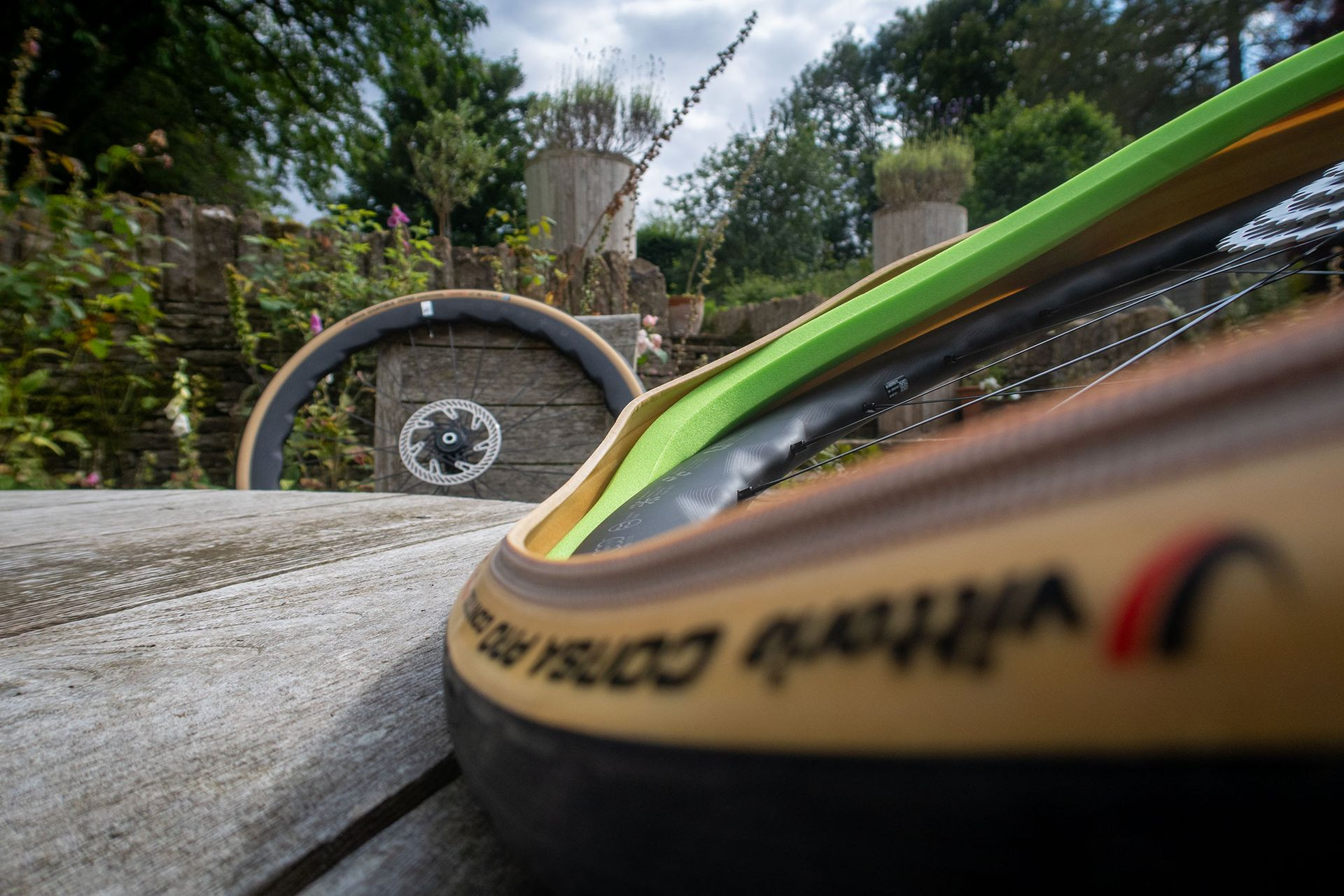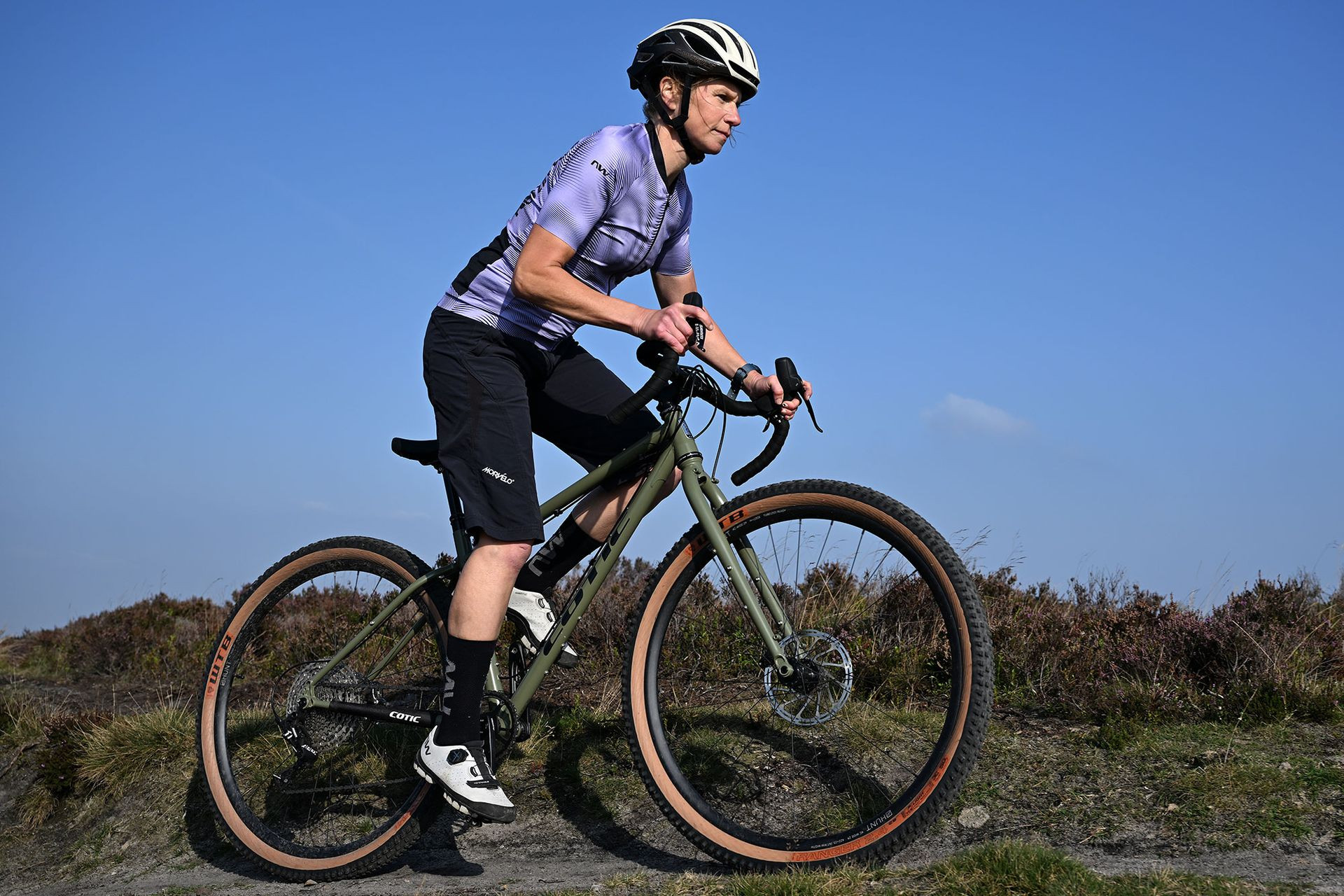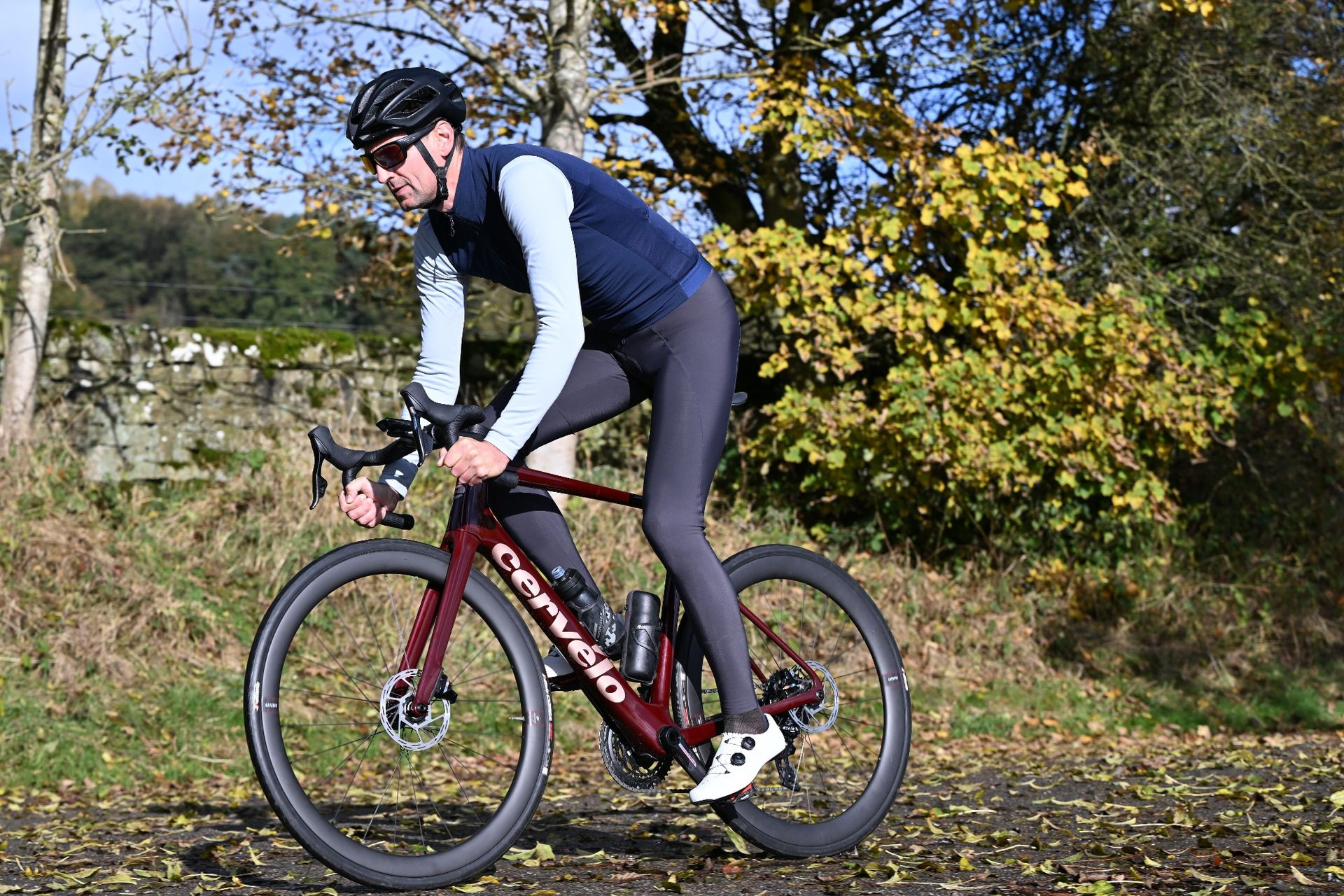Everyone loves a Gravel Bike, right? Rugged, handsome, and seemingly ready for anything, they’ve become the default, the do-it-all ‘only bike you’ll ever need’. Much like an eager-to-please puppy, it’s no wonder they’re so popular.
Gravel bikes are comfortable, capable, and cool. Their chunky, go-anywhere good looks appeal to our sense of adventure. They promise excitement, action, a healthy dose of nature, a fierce, echoing response to the call of the wild. What’s more, it’s acceptable – almost required – to accessorize them with all sorts of knobby tires, sturdy racks, and rugged bags that might raise eyebrows among road cycling purists. To look the part, just make sure anything you attach to your bike is olive green, earth brown, or straw yellow and you’re set.
 Wilier Jena from the side on a light gravel track
Wilier Jena from the side on a light gravel track
Image: Wilier Jena gravel bike on a light gravel trail, showcasing its versatility.
Except, maybe you’re like me, and you find yourself not actually seeking out gravel roads on your gravel bike. Bought on a whim – let’s call it an end-of-season sale impulse – it’s a purchase I came close to regretting. To be clear, there’s absolutely nothing wrong with the bike itself. It’s a beautiful Wilier Jena, equipped with Campagnolo Ekar 13-speed, a truly capable gravel bike that, through no fault of its own, started to feel a bit purposeless in my stable.
I suspect I’m not alone in perhaps jumping on the gravel bike bandwagon a little too quickly, swept up in the ‘one bike to rule them all’ enthusiasm. Their popularity is undeniable.
The cycling industry data shows impressive numbers. Gravel bikes have seen a significant surge in sales over the past few years. But it begs the question: how many of these gravel bike owners are actually spending their time riding gravel? And when we say gravel, are we talking about the smooth, well-maintained gravel paths, or the rough, challenging gravel roads that define true gravel riding experiences, like those found in the American Midwest?
I suspect I’m not the only one who has bought a gravel bike by mistake…
It’s the versatility of the gravel bike that becomes its saving grace. With a few smart changes, my Wilier Jena transformed into a surprisingly good endurance road bike. Like me, many gravel bike owners I know eventually trade in the chunky gravel for faster country roads and smoother trails. This often means swapping out those knobby tires for something more road-friendly, like a set of fast, slick 32mm tires. Others adapt their gravel bikes for winter riding, fitting sturdy road tires and adding fenders to handle wet conditions.
But the world of gravel is evolving, and gravel racing is booming, especially in the US. Events like Unbound Gravel in Kansas and SBT GRVL in Colorado have become massive. The number of gravel racers signing up for these events is exploding. Unbound now attracts thousands of riders, a huge jump from just a few years ago. SBT GRVL also sees incredible participation, showcasing the growing appeal of gravel racing.
This surge in gravel racing hasn’t gone unnoticed by major cycling brands. Over the last year, almost every gravel bike and component launch seems to be influenced by these big US races. The focus is on off-road speed and the pursuit of podium finishes in challenging gravel events.
 Vittoria Air-Liner pictured in Vittoria Corsa Pro Control tyre
Vittoria Air-Liner pictured in Vittoria Corsa Pro Control tyre
Image: Close-up of Vittoria Corsa Pro Control tire and Air-Liner insert, highlighting modifications for road use on a gravel bike.
Gravel bikes are changing quickly. Frame geometry is becoming more relaxed for stability on rough terrain. We’re seeing gravel bikes with front and even rear suspension. Tire widths are increasing, and rims are getting wider to accommodate them. Gear ranges are expanding, rivaling those of mountain bikes to conquer steep gravel climbs.
This trend towards more off-road focused gravel bikes doesn’t bother me in principle – they are called gravel bikes after all. But as they become more specialized for demanding off-road conditions, they inevitably become less ideal for on-road riding.
Part of the initial appeal of a gravel bike, especially for many riders, was the ability to link up sections of gravel with smooth pavement. Many rides, even in rural areas, involve a mix of road and gravel. Riding on the road with very wide, aggressive gravel tires isn’t always the most enjoyable or efficient experience.
 Cotic Cascade on moorland ride
Cotic Cascade on moorland ride
Image: Cotic Cascade gravel bike in a moorland setting, illustrating off-road gravel riding.
In short, modern gravel bikes might not be as versatile as the gravel bikes of just a few years ago. So, if you’re considering a new bike, it’s worth thinking carefully. If you anticipate spending a significant amount of time on paved roads, with only occasional forays onto mild trails, a dedicated, hardcore gravel bike might be overkill.
Fortunately, the innovative bike industry has an answer: the all-road bike. It’s arguably what many riders might have needed all along. While the term “all-road” has been around, these bikes have truly come into their own recently.
Think of an endurance road bike, but with a slightly more robust frame and enough tire clearance for wider tires, perhaps up to 38mm. An all-road bike aims to be fast and comfortable on pavement, yet still capable and confident on light gravel and maintained dirt roads. We’re seeing fantastic examples of all-road bikes, such as the BMC Roadmachine, Ribble Allroad, Cervelo Caledonia-5, and Pashley Roadfinder. And there are more all-road models being released all the time, indicating a growing trend.
 An allroad bike like the Caledonia is an adaptable machine
An allroad bike like the Caledonia is an adaptable machine
Image: Cervelo Caledonia-5 all-road bike, emphasizing its adaptability for various terrains.
So, perhaps, instead of a gravel bike, an all-road bike could be the answer for riders who prioritize versatility across varied terrain, with a focus on road performance. The great news is that as gravel bikes become more specialized and endurance bikes become more adaptable, cyclists benefit from having more choices than ever. And more choice is always a good thing.
Ultimately, the “best” bike depends on your individual riding style and the type of terrain you typically ride. Consider what kind of riding you actually do most often before deciding if a modern gravel bike, or perhaps a versatile all-road bike, is the right choice for you.

